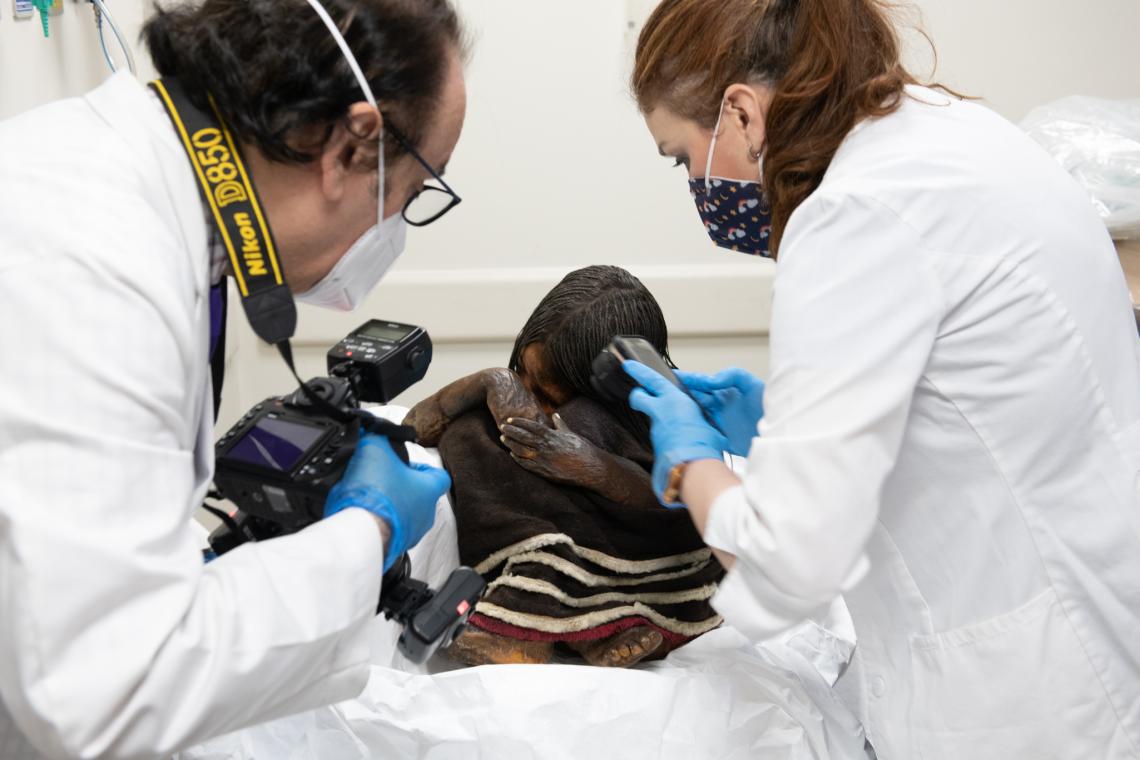Sacrificed ‘frozen’ Inca child in Chile did not die peacefully as previously thought, study finds
Researchers previously thought boy was put to sleep before he was placed in icy tomb
An Incan child from Chile’s Cerro El Plomo ritually sacrificed over 500 years ago and well preserved as a frozen mummy did not die “peacefully” as previously believed, but from a blow to the head, a new study found.
The iconic Plomo Mummy of the eight-year-old found in a sitting position, hugging his knees, has been studied for decades by archaeologists since its discovery in 1954.
Researchers previously thought that the boy was fed narcotic substances, and put to sleep before being placed in his icy tomb where he succumbed to suffocation.
Chile’s National Museum of Natural History says the child was killed around 1460 at a sacrificial ceremony called Qhapaq hucha, or Capacocha, which was likely attended by nobles, priests and officials of the Inca Empire.

Before his death, there are signs that the boy walked more than 2,000km (1,250 miles) from south-central Peru to Cerro El Plomo over several months as seen as marks on his feet, researchers say.
Experts thought his last moments were likely marked by fatigue from the long journey, high altitude, and the ingestion of a narcotic substance before he was placed in a rectangular chamber with a frozen floor inducing hypothermia and death.
A funerary offering was also placed next to the boy, including ceremonial objects, including two figures of camelids – one made of a gold and silver alloy and another made of shell.
Archaeologists suspect such sacrifices were likely ways by which Inca tried to ensure that the best of humanity joined their deities.
But recent research is changing views on how these ritual sacrifices were carried out.
New CT X-ray scans of the Plomo Mummy’s head portion reveal signs of a “skillfully executed” blunt-force trauma to the frontal bone of the boy’s skull.
The trauma appears to have been caused by a blunt object moving from right to left when the child was standing with his head down, researchers from the museum said.

These new findings challenge previously held beliefs about the nature of ritual child sacrifices to the Sun god in the Inca empire, particularly during the harvest month.
Close to his death, the boy also appears to have ingested a “large volume of food” that has remained undigested in his gut.
Genome analysis also confirms his ancestry is from the south central Andes and ancient individuals from northern Chile as well as the southern highlands of Peru.
However, it has not been possible yet to pinpoint his exact origins.
Subscribe to Independent Premium to bookmark this article
Want to bookmark your favourite articles and stories to read or reference later? Start your Independent Premium subscription today.


Join our commenting forum
Join thought-provoking conversations, follow other Independent readers and see their replies
Comments